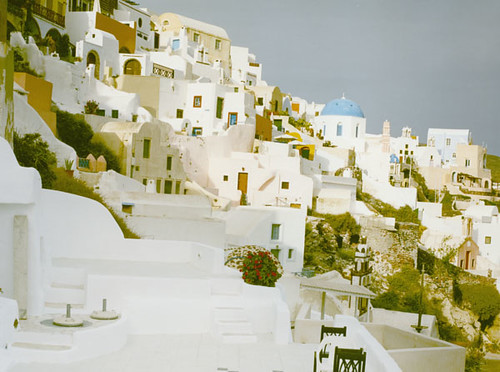Let There Be White
Posted by Big Gav in energy efficiency
Next100 has a post on the value of painting rooftops white in warm climates - a simple step that saves energy and money and reduces carbon emissions - Let There Be White.
We Californians rightly take pride in our state's contribution to high tech, but sometimes it takes low tech to change the world for the better.
That's one of the great insights of a group of researchers at Lawrence Berkeley Laboratory (LBL), who won widespread attention this week for their finding that simply by painting roofs white and making pavements more reflective, the world could become measurably cooler, healthier and more affordable--whether you live in Africa or Los Angeles.
In a summary released this week of a paper to be published in the journal Climate Change, Hashem Akbari and Surabi Menon, scientists at LBL, and Arthur Rosenfeld, a member of the California Energy Commission who formerly worked at LBL, report that lightening up on roofs and pavement would reflect enough sunlight to offset the heating effect of 44 billion tons of CO2, or more than the world's total annual emissions of that greenhouse gas by 2025. Cool!
If helping the globe isn't reason enough to take action, there's a powerful economic incentive: cooler buildings require less energy for air conditioning. Energy customers in the United States alone could save more than a billion dollars a year, according to Rosenfeld. And by cutting back on energy use, these measures would directly reduce power plant emissions of greenhouse gases, further slowing the pace of global warming.
Last but not least, we could all breathe easier as well. As urban areas heat up from the concentration of dark surfaces that absorb sunlight, chemical reactions speed up the cooking of various air pollutants into unhealthy smog. Worker productivity falls, hospital emissions rise, and people have to cut back on outdoor activities. Making surfaces lighter would slow that process.
Co-author Akbari says he's received about 200 calls and emails this week about the study. It's been reported in the Los Angeles Times and other newspapers, leading blogs like Green Wombat, and newsletters as far afield as Carbon News in New Zealand.
But his Urban Heat Island group at LBL didn't just come up with the idea. They've been publishing pathbreaking research along very similar lines for twenty years. (I know because I started writing about it as an editorial writer at the Oakland Tribune in the 1980s.)
Akbari said scientists have long known that as cities grow, replacing vegetation with buildings and pavement, they get hotter. Vegetation cools the air by releasing water vapor; buildings and pavement warm the air by trapping solar radiation. The yearly high temperature in Los Angeles soared 8 degrees F from the mid-1930s to the 1990s primarily due to this effect and not global warming.
The LBL scientists reasoned that if human behavior could cause the problem, more enlightened behavior ought to be able to mitigate the problem, at least in part. Thus they began experimenting with lighter paints, reflective surfaces, and planting trees to shade buildings. They measured the effects both on individual buildings (greater comfort, lower energy bills) and on the broader urban environment (cooler climate, healthier air).
Demonstration projects in more than a dozen "Cool Communities" found that the use of light- and heat-reflective materials, and careful planting of trees, could reduce peak summer temperatures by as much as 5 degrees F, cut the need for air conditioning by 18 percent, and reduce air pollution. ...
It's almost enough to make me believe in a free lunch. Just by changing the color and type of roof and paving materials, we can increase our comfort, save money, and help the planet. As Akbari says, it's a win-win-win for everyone.






